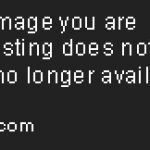Lesson 4: Applying Construction to Insects and Arachnids
11:14 AM, Wednesday July 21st 2021
Here is my submission for lesson four!
I definately liked this one better than the plants and I felt a bit better at drawing these too. I can definitely see some of my own improvement from the first couple of drawings here compared to some of the last ones. But I still feel my line confidense isn't all that and sometimes I draw shapes I don't want. For example: I would often draw a leg part way thicker than it's supposed to be. Any tips regarding that or whatever else would be great.
Thank you for your time!























